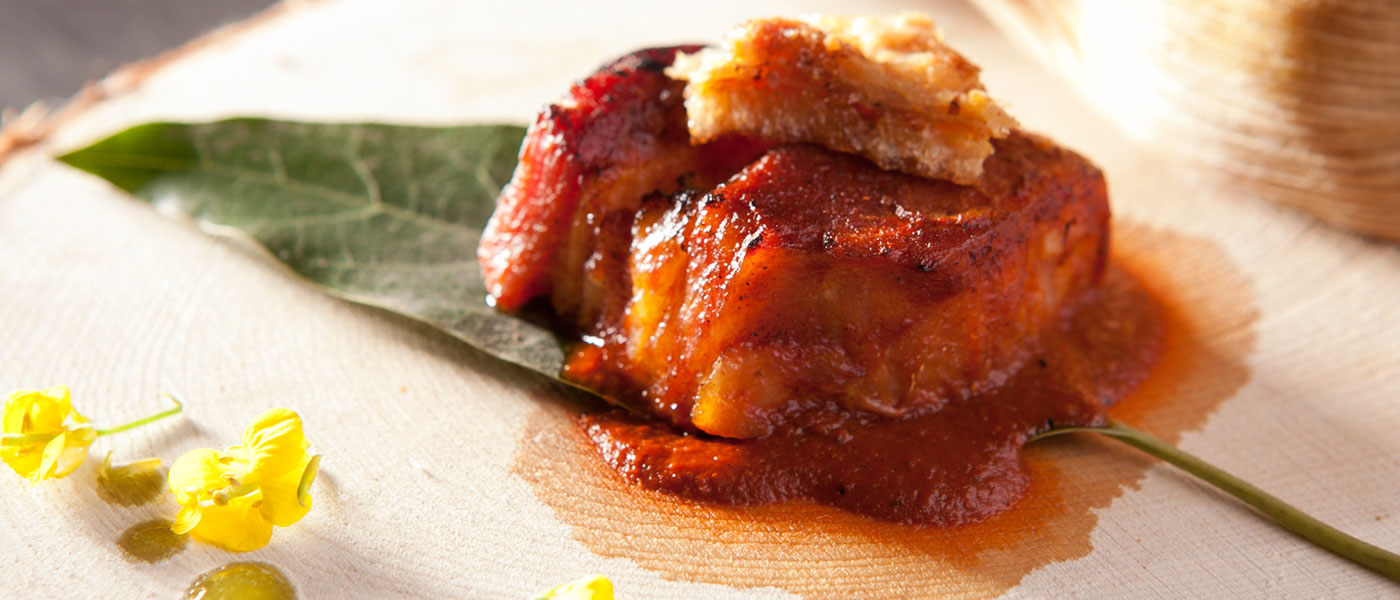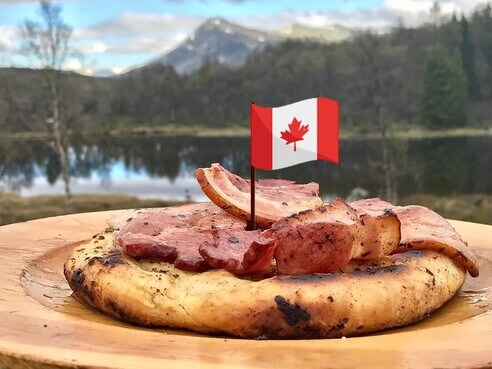Canada is a multicultural nation where people from around the globe come together to celebrate diversity.
The result is a vibrant mix of cultures, traditions, languages, cuisines, and lifestyles.
Canadian cuisine has always had its place at the table. From poutine to smoked meat pies, Canadians love their food.
Canada is known for its wide variety of foods. The country boasts some of the best cuisines in the world, from French to Chinese, Italian to Indian.
In addition to these well-known cuisines, there are also regional specialties such as the ones we will be talking about below.
What kind of food does Canada serve? Is it mostly meat or vegetables? Are they spicy or bland?
Canadians love their comfort foods. And it seems like every region has its own specialties. Whether you want to try something new or go back to your favorite dish, these are some of the typical Canadian dishes.
Does Canada have its own cuisine?
Yes, but it varies by region and may involve some variation on traditional foods from countries where immigrants came from.
A lot of small towns in Alberta had just one restaurant serving Chinese and Canadian foods during the 1950s and 1960s.
When we go out for a treat, we don’t want to stick to our normal eating habits.
There are lots of very specific Alberta Chinese recipes, including some that were likely brought from Japan. Some examples include the fluffier breading on sweet and sour Chicken or the strangely colored ginger sauces for Ginger Beef.
One of the most popular cuisines in Alberta is the perogies, which are a traditional Ukrainian dish prevalent in the largely Ukrainian settlements around Calgary and Edmonton.
Hutterite sausage products, which are made in a modified German-styled manner, can be found at most grocery stores in Alberta.
Taber, in southern Alberta, has developed some unique varieties of sweet corn that will absolutely spoil any chances you have of enjoying any other kind of sweet corn.
It’s especially delicious when grilled.
A Sugaring off party in Quebec will provide you with a wide variety of traditional Quebecois foods, a large slab of fatty meat in your stomach, and plenty of maple syrup to take you back home in a state of blissful exhaustion.
Newfoundland & Labrador have strong Scottish and Irish food tradition, which includes lots of meat dishes, especially beef, salt pork, fresh seafood, and potatoes.
What are traditional Canadian foods?
Most Canadians don’t know exactly what “Canadian” cuisine is.
But we do have some distinct regional cuisines that originate from within Canada.
Here are three foods that make us proud of being Canadian.
3 traditional foods in Canada?
Bannock
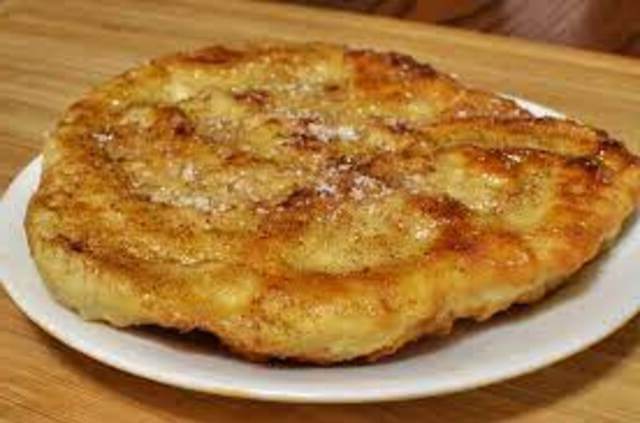
A satisfying quick loaf of bread steeped in Canadian culture, basic bannock consists of flour, water, and fat (usually lard). It’s shaped into a disc and either baked, fried, or grilled until golden.
It might have been brought by Scottish fur traders in the eighteenth century, or a First Nation version of corn, nuts, starchy root vegetables, and white flour could have been used by Europeans, who eventually changed the recipe to use whole grain pieces of bread.
Regardless of which method you use, this easy-to-make bread was a staple for both family and travelers during the harsh winter season and is still enjoyed across Canada today.
Caesars
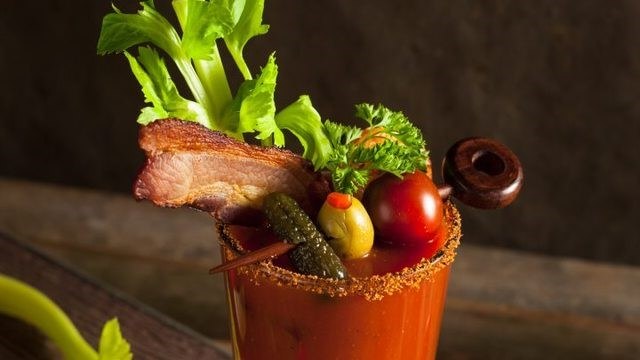
A proud Calgary invention, the Caesars was invented by Walter Chell, an Italian-born bartender.
According to legend, Chell created this zesty tomato-and-clam juice cocktail by adapting his beloved spaghetti with clam sauce into this spicy tomato-clam juice drink spiced up with Vodka.
The Caesar quickly became popular across Canada, and today it’s often referred to as “Canada’s National Cocktail.”
Today’s Caesers are often crowned with over–the–table garnishes, such as lobster tails or sushi rolls.
Nanaimo Bars
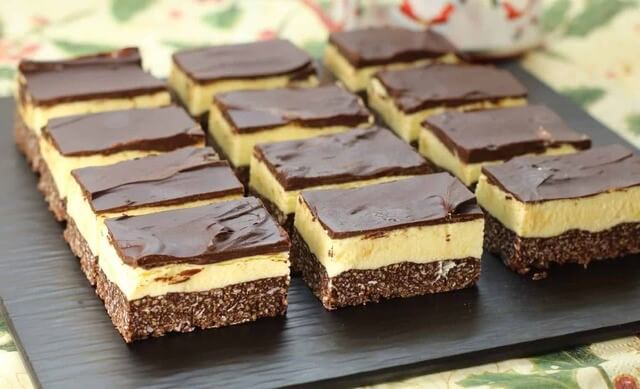
There are as many different recipes for these three-layered bars as there are origin stories.
For certain, one thing is for sure: Nanaimo bars are named after the city situated in British Columbia.
The creaminess, custardiness, and sweetness of Nanaimo bar centers set them apart from the buttercream-filled New York slices.
Both have a smooth chocolate topping, a rich graham cracker crust, and a delicious filling.
You can customize any of the layers or change them into something else entirely, but they still have that B.C heritage.
What is Canada’s most famous food?
Poutine
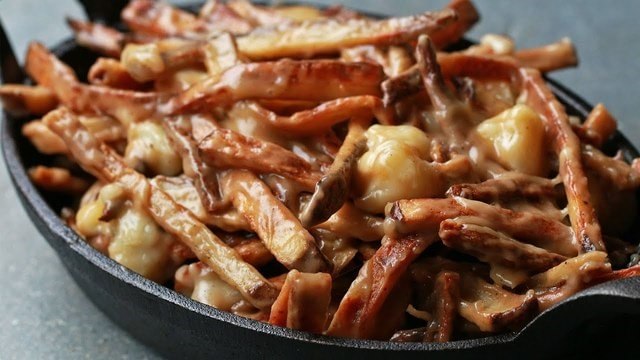
Poutine, one of the many culinary treasures from French Canada, has become the definitive Canadian dish.
There are several small towns in Quebec that claim to be the birthplace of this famous dessert, but it’d probably be safe to say that it was first created in the 1950s.
Real poutine has spicy peppery meat-based gravy and squeaky cheese curd on top of fries.
Where to eat Poutine in Canada
If you’re looking for fries at any Canadian restaurant, they’ll likely include poutine, even if it’s not specifically listed on their menus.
National food chains like Smoke’s Poutinerie serve any protein or vegetable variations of this calorie-heavy dish.
If you’re up for a real party, there are also annual Poutine Festivities in various Canadian towns.
What is the most Canadian food?
Maple Syrup

Maple syrup is one of the quintessential Canadian products. Its iconic maple leaf logo represents Canada’s national pride.
Maple Syrups are produced by Quebec, which accounts for about 75 to 80% of the global production.
Maple syrup, which has been recently given superfood status, is a classic topping for pancakes and waffles.
However, that hasn’t prevented some people from trying to think up unusual combinations such as maple-bacony doughnuts.

